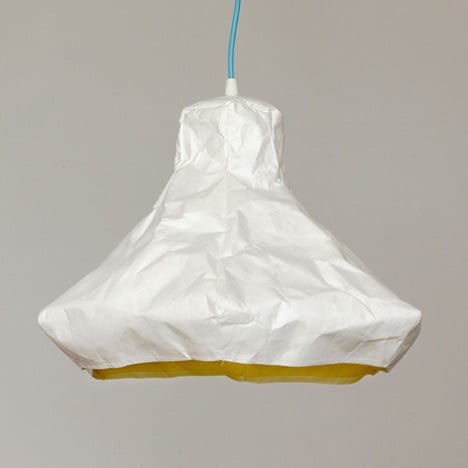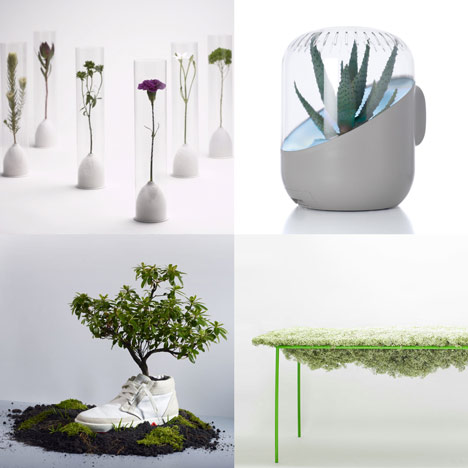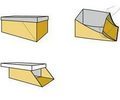Philips Improves Carbon Footprint; Lighting Drives Product Efficiency
by: Environmental Leader, 2011-02-25 17:25:50 UTC

 Philips Electronics has achieved a seven percent reduction in its carbon footprint and increased operational energy efficiency by six percent between 2009 and 2010.
Philips Electronics has achieved a seven percent reduction in its carbon footprint and increased operational energy efficiency by six percent between 2009 and 2010.
The company reduced its operational carbon footprint from 1,937 to 1,808 kilotons CO2-equivalent between 2009 and 2010, according to the company’s 2010 annual report.
In that time Philips improved its energy efficiency from 1.35 to 1.26 terajoules per million euro sales – its first energy efficiency improvement since 2007. The figure rose in 2008 and 2009.
In 2010, Philips invested more than 450 million euros in “green innovation”, meeting its target for a cumulative 1 billion euro investment two years ahead of schedule.
The company has announced it will allocate an additional 2 billion euros to the innovation program by 2015.
Meanwhile, green product sales rose to 38 percent of overall sales, up from 31 percent in 2009. For the second year running it met a target to generate 30% of total revenues from green products, and it has a new target of 50 percent by 2015.
The company has different green innovation priorities for each area of its business. In healthcare, innovation projects aim to reduce total lifecycle impact, particularly energy consumption, weight and radiation dose.
Consumer lifestyle green innovation focuses on developing new environmentally-friendly products, enhancing energy efficiency and closing material loops. That part of the business worked on the voluntarily phase-out of polyvinyl chloride (PVC) and brominated flame retardants (BFR), enabling Philip’s lifestyle entertainment and personal care businesses to launch products completely free of these substances, Philips said.
Eliminating those substances helped Philips hang onto its third-place spot in the Greenpeace Guide to Greener Electronics.
Consumer lifestyle investments also led to Philips introducing its Economva LED TV.
The lighting sector accounts for over half of Philips’ spend on green innovation and contributes to about 45 percent of its green product sales. In this sector the company focuses on developing energy-efficient lighting, enhancing existing green products and developing new types of technology such as solid-state lighting.
In 2010, Philips declared that sustainability is an integral part of its strategy and a key driver of growth for the company. The company announced its EcoVision5 program, which includes key performance indicators related to sustainability leadership. These are:
- Improving energy efficiency of Philips products: Goal of 50 percent improvement by 2015 (for the average total product portfolio) compared to 2009. Product energy efficiency improved by 4 percent in 2010, the company said, with lighting contributing the most improvements.
- Closing the materials loop: Double global collection and recycling amounts and recycled materials in products by 2015 compared to a 2009. In October Philips flunked a recycling report card released by the Electronics TakeBack Coalition.
- Bringing care to people: Goal of 500 million “lives touched” by 2015 – the company says it touched 420 million lives in 2010, mainly driven by its healthcare sector.
In 2010, Philips also audited 273 supplier sites against it supplier sustainability declarations – increasing the number of audited sites by 21 percent, to a total of 1,591 full scope audits since 2005.
Philips announced that for the first time, it will not make its annual report available in a print version, though users can download and print the report from its website.
 Rewards as a Driver of Green Consumer Engagement
Rewards as a Driver of Green Consumer Engagement
by: Environmental Leader, 2011-02-28 22:23:26 UTC

 I believe that the idea of rewards in the green space have the potential to change consumer behavior without necessarily changing attitudes first. I first wrote about this in a 2007 blog post. Today, it remains a powerful way to expand the appeal of green.
I believe that the idea of rewards in the green space have the potential to change consumer behavior without necessarily changing attitudes first. I first wrote about this in a 2007 blog post. Today, it remains a powerful way to expand the appeal of green.
As every marketer knows, it is expensive, time consuming and downright difficult to change consumer attitudes. By contrast, rewards can reframe the dialogue by creating a financial incentive for consumers to engage, regardless of interest or attitude. The result is that rewards can expand the target audience to those motivated less by altruism than by financial gain. Suddenly, consumers that did not make the environment a priority are willing to take action to earn rewards. Marketers should be fine with this as long as it helps achieve business objectives in a cost-effective way.
Interestingly, rewards can be a critical tool for companies looking to enhance their marketing efforts. Rewards can be a tool to:
Motivate Consumer Engagement. Today, marketers are tasked with engaging with consumers in order to increase brand awareness, change sentiment and motivate purchase. Rewards can accelerate this effort by incentivizing consumers to take desired actions in order to earn rewards. Such a cost per engagement model can be particularly relevant for emerging green products with low awareness, as it provides an added incentive for consumers to engage, perhaps tiered based on the type, level or value of the interaction.
Optimize Engagement Experience. Marketers can optimize their efforts by promoting those consumer behaviors or sequence of behaviors that are more aligned with desired outcomes. Here is how it might work: Consumers earn points as they engage with content or tools online or take offline actions. Consumer behaviors are tracked and associated with specific points earned and rewards redeemed. Marketers can then optimize consumer engagement by promoting those behaviors that are most correlated with fulfilling campaign objectives.
Enhance Existing Incentives. Even when financial incentives already exist, they may not be sufficient to grab – and hold – significant consumer mind share. Today, several energy platforms such as OPOWER motivate consumers to save money on their bills by empowering them with personal usage data, comparative feedback and tangible steps on how to reduce their energy use. Indeed, OPOWER has had success in changing consumer behavior, reporting that such passive (one-way) engagement does empower consumers to take action – with participating consumers averaging 1.5% to 3% in energy savings over a control.
Interestingly, the introduction of rewards may be able to accelerate and sustain such energy savings by providing a greater financial incentive (bill savings + rewards earnings) for a consumer to take action. Such a model turns passive consumers into active ones that are more likely to engage with home energy tools, to open ongoing communications and to purchase energy-saving products. Such a hybrid (passive/active) model was first suggested in a study, “Residential Energy Use Behavior Change Pilot”, authored by Carroll, et. al.*
Indeed, this was an impetus for a recent initiative from RecycleBank, an environmental social platform that realizes the collective impact of individual action. Through its digital offerings and partnerships with municipalities, haulers, small businesses and corporate brands, Recyclebank incentivizes green actions with points that can be redeemed for discounts and rewards. This year, RecycleBank partnered with Efficiency 2.0 to launch of two energy platforms – CUB Energy Saver (Commonwealth Edison) and Western Mass Saves (Northeast Utilities). Such platforms provide direct outreach to all consumers while providing the potential to earn rewards by those that actively engage.
David Wigder is a lifelong environmentalist and has worked as a business strategist, environmental engineer and marketer in the space. He holds an MBA from Columbia Business School, an MSE in environmental engineering from the University of Michigan and a BA from Northwestern University. He recently joined Ogilvy as Senior Director, Marketing Strategy.
 Papela by Meirav Barzilay
Papela by Meirav Barzilay
by: Dezeen, 2011-02-28 19:42:14 UTC

Product designer Meirav Barzilay of Tel Aviv has designed this crumpled papery pendant light that comes scrunched up in a ball. (more…)


 J Henry Fair's Abstract Photographs Depict Destruction
J Henry Fair's Abstract Photographs Depict Destruction
by: TreeHugger Design, 2011-02-28 09:54:59 UTC
 Photo: J Henry Fair, with permission of Gerald Peters Gallery Crime and Punishment, Gulf of Mexico , 2010
Photo: J Henry Fair, with permission of Gerald Peters Gallery Crime and Punishment, Gulf of Mexico , 2010
A good documentary photographer takes us to places that we never could imagine and teaches us something at the same time. Some do it by shooting stark realism, like Canadian
Ed Burtynsky, or South African
Pieter Hugo, but J. Henry Fair's work is more abstract.
His aerial photos look like a beautifully painted canvas th...
Read the full story on TreeHugger
Lots of Hot Water from Small-Scale Parabolic Solar
by: Eco Geek Latest, 2011-02-17 20:12:31 UTC

Parabolic solar dishes generally come in two sizes, the very small "solar oven" and the large, industrial scale solar furnace. But now, a Canadian company is making parabolic solar dishes for small commercial and even residential use.
The Solar Beam Solar Concentrator produces up to 13kW of heat per hour according to the company. That's far more hot water than most households would need, but could be practical for a home with hot water radiators or in-floor radiant heating.
Solar Beam uses a 15 foot (4.5 meter) diameter parabolic dish. A block of aluminum 10 x 10 inches (25.4 x 25.4 cm) absorbs the heat and transfers it to a glycol fluid which circulates the heat to the equipment where it is needed. The company also claims a much faster payback for the Solar Beam as compared to flat panel solar water heaters. "The SolarBeam is 262% more efficient that hot water panels and 98% more efficient than evacuated tube technology."
The Solar Beam uses a 2-axis controller to track the sun throughout the day, in order to increase efficiency of energy collection. Since just one dish has to be tracked, it is much easier to do this than it would be to have an array of flat panels tracking the sun. Since the collector can be ground mounted, it can be possible to use it for solar hot water in places where orientation or other factors do not make rooftop collectors practical. The smaller size also makes it possible to use the dish in places where there is not the space available for a large rooftop array or where it might be otherwise undesirable.
via: Solar Thermal Magazine
 Cardboard USB Sticks! Are these disposable USB flash drives a green option? (Photos)
Cardboard USB Sticks! Are these disposable USB flash drives a green option? (Photos)
by: TreeHugger Design, 2011-02-24 08:04:10 UTC

A while back, Jaymi wrote an interesting post discussing
7 greener options for give-away USB flash drives. Whilst
some made of wood or bamboo are truly gorgeous, they are also overdesigned, and probably too expensive to compete with non-green USB sticks when it comes to give-away merchandising at trade fairs and conferences. Now, the Russian design company
Art Lebedev Studio came up with a disposable USB stick, called
Read the full story on TreeHugger
UN says 2% of world GDP will buy fair green growth
by: Euractive, 2011-02-23 07:52:57 UTC
Annual investment of €950 billion – or 2% of global GDP – in ten key sectors could kickstart moves to a "low-carbon, resource-efficient green economy," according to a report by the United Nations Environment Programme (UNEP).
A new green economy is within Europe's grasp: Report
by: Euractive, 2011-02-21 13:53:12 UTC
Europe can revitalise its economy by a massive burst of investment in green technologies aimed at reducing emissions by 30% by 2020 on 1990 levels, according to a major new report promoted by the German Environment Ministry.
Dezeen archive: plants
by: Dezeen, 2011-02-27 10:39:56 UTC

Dezeen archive: following our story on Offecct’s collection for incorporating plants in design this week here’s a selection of stories from the Dezeen archives featuring plants, flowers and seeds. See all the stories »
See all our archive stories »


 Sunflower: Solar-powered LED Monitor to share green energy with your cool gadgets!
Sunflower: Solar-powered LED Monitor to share green energy with your cool gadgets!
by: Ecofriend, 2011-02-24 17:48:49 UTC
Attitude:

There is no lack of variety when it comes to laptops, tablets and smartphones in the market today. But what most of us as users conveniently forget is that all these are charged up using conventional grid power. That means, that all those mobiles, laptops, iPads, PCs and other ‘cool stuff to sport’ collectively leave behind a huge carbon-footprint. Sunflower LED PC monitor not only offers to cut out on the conventional power usage, but also tries to offset the carbon-footprint of other gadgets around the home as well.

The Sunflower monitor has integrated photovoltaic cells that can juice up when you are not at home or not working on the your system. Just place it next to the window and have some sun shine on it and it will do the rest. This power is stored and used for the PCs functioning later on. It also has a ‘wireless Bluetooth sharing dock’ integrated into its stand. Just hook up your favorite mobile (the likes of iPhone 4, Android or WP7 handsets) and you can share data with the click of a button.

You can transfer pictures, music, videos and every other file format that your mobile supports. We are hoping that it will also charge the mobile while sharing files, but its creator Marko Vuckovic has not made to clear whether that feature is on offer. Either way, this is one concept design we can totally get behind!

Via: Behance








Comments by our Users
Be the first to write a comment for this item.